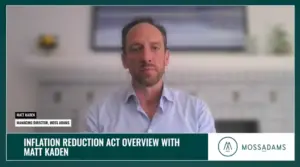MAJOR DECISION IN FAVOR OF INMATES IN TEXAS
Twenty-two inmates in Texas prisons have suffered heat stroke-related deaths since 1998, according to a report submitted to US District Judge Keith Ellison in a recent lawsuit on behalf of Texas prisoners. Jeff Edwards, attorney for the inmates, argued that Texas heat is dangerous for any inmate, but most for especially those who already have certain health issues.
Indeed, Texas heat is dangerous. While weather in the Lone Star State varies widely throughout the year, Texas summer temperatures are truly scorching at times. A CDC report revealed that in the first decade of this millennium, 7,233 people died from heat-related illness—that’s 54 individuals per month—in Texas. The most serious of these illnesses is heat stroke.
With indoor temperatures in the living quarters of the Pack Unit near Houston, Texas, reaching 100° Fahrenheit at times, the judge agreed with Mr. Edwards. Judge Ellison stated that the heat created a “substantial risk of serious injury or death” and that the risk was “significantly higher” for inmates with health concerns. Ellison then ordered that prison temperatures for the more sensitive inmates be lowered to 88°. This ruling led to the temporary transfer of roughly 1,000 prisoners to a cooler facility.
There is a lot of misinformation about heat stroke, even in states where the risk is real. It is often confused with heat exhaustion, whose symptoms include extreme sweating, weakness, dizziness, and nausea. Heat exhaustion requires medical intervention and is a serious health event. However, heat stroke is much more dire and comes on more suddenly. In addition to symptoms that mimic heat exhaustion, signs of heat stroke can include confusion or a change in demeanor, vomiting, blood in the stool or urine, and/or lack of consciousness. The key difference in basic symptoms is that with heat stroke, sweating stops and the skin is dry.
When the body loses fluids quickly in this manner, it traumatizes internal systems which need water to function. This is especially true of the human heart, since the loss of fluids and accompanying vital minerals means loss of muscle contractions, nerve transmission, and water balance. For those in the overheated closed quarters of prisons, the heat is relentless, and can lead to chronic fluid loss and other health issues. Especially for those with weak hearts or ongoing preexisting conditions. So, a spike in temps on a blistering hot day in Texas requires a short leap from heat exhaustion to heat stroke, and to potential death. The judge’s ruling suggests that these conditions do fall under the criteria for cruel and unusual punishment—a direct violation of the inmates’ constitutional rights.
This ruling is only relevant for the Pack Unit near Houston, though. However, Edwards believes this decision could send a strong message to the Texas Department of Criminal Justice, prompting them to follow suit in other facilities.
Breezer Mobile Cooling understands the need for comfortable working and living conditions. That’s why we created the Power Breezer ®. A cooler environment means a comfortable environment and one in which health and safety risks are reduced. A cool environment has been shown to minimize careless but costly mistakes. A work environment that is cool and pleasant is more likely to retain quality employees and increase productivity as well.
To learn more about Breezer Mobile Cooling, visit our website today!
Read more at powerbreezer.com
____________________________________________________
https://www.webmd.com/first-aid/understanding-heat-related-illness-symptoms
https://www.herrmanandherrman.com/blog/summer-danger-heat-stroke-texas-avoid/







